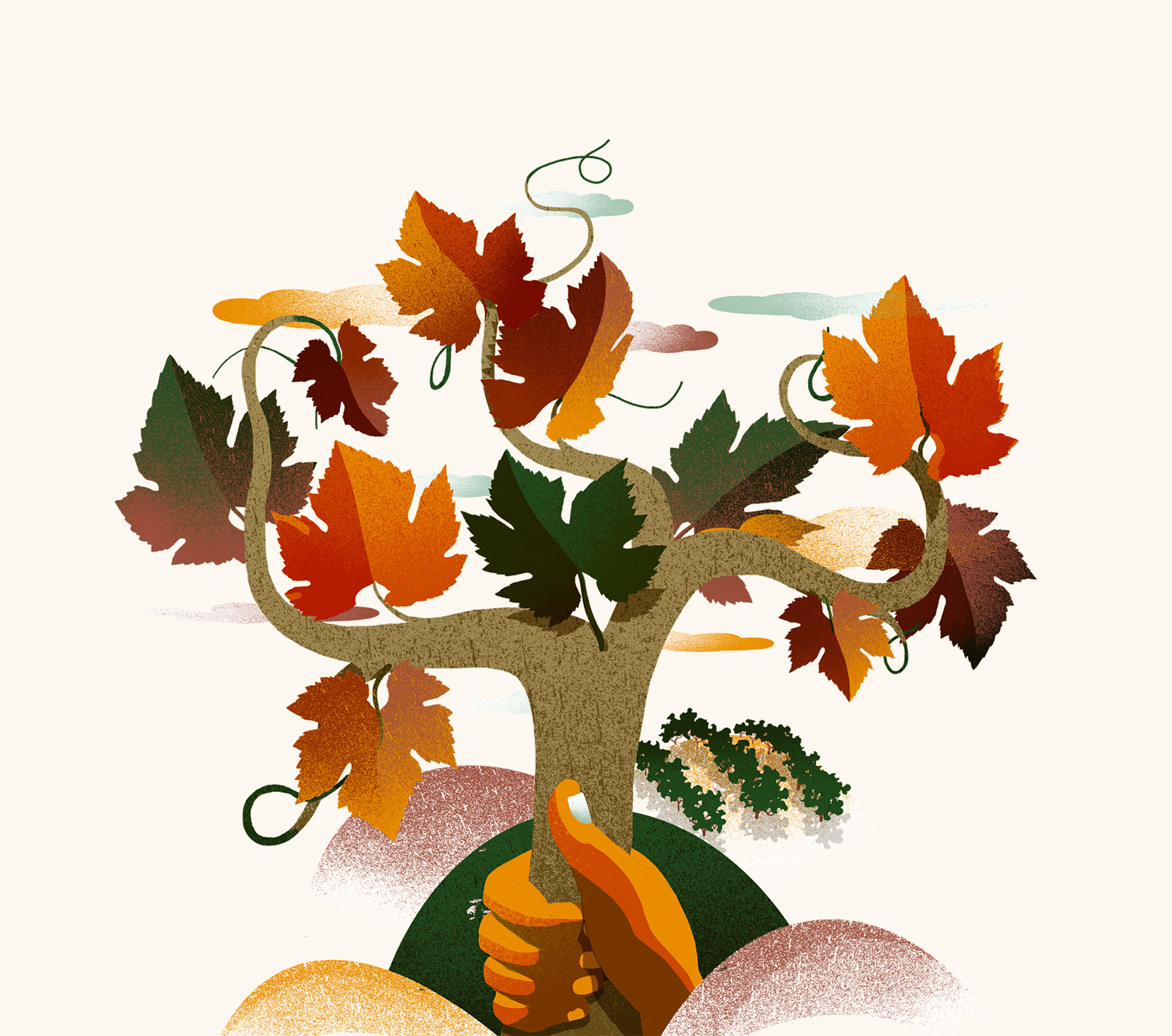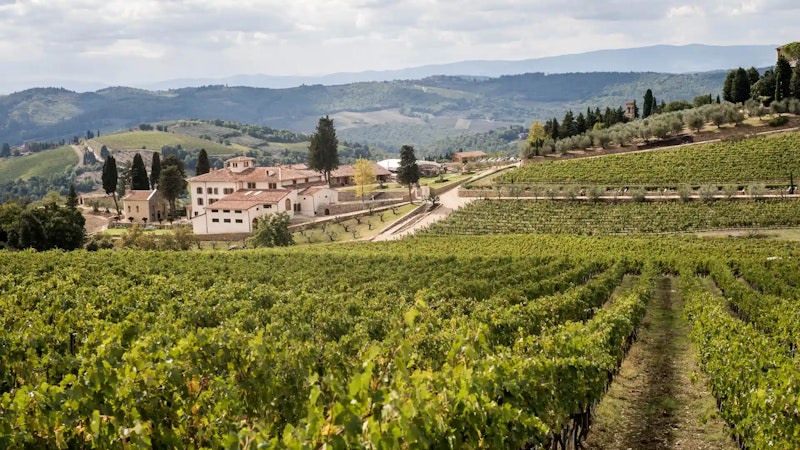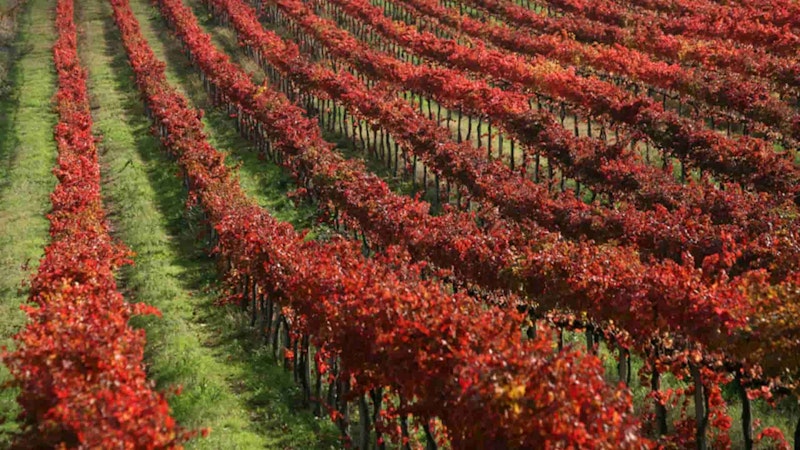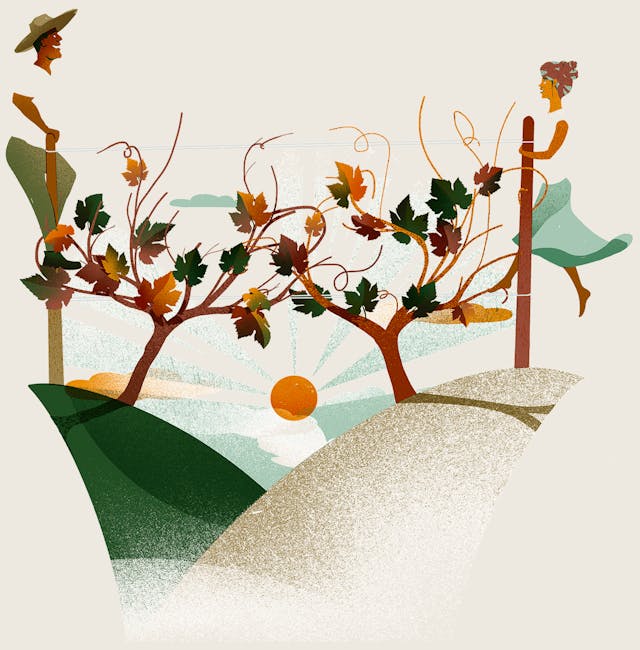Discover... the Langhe
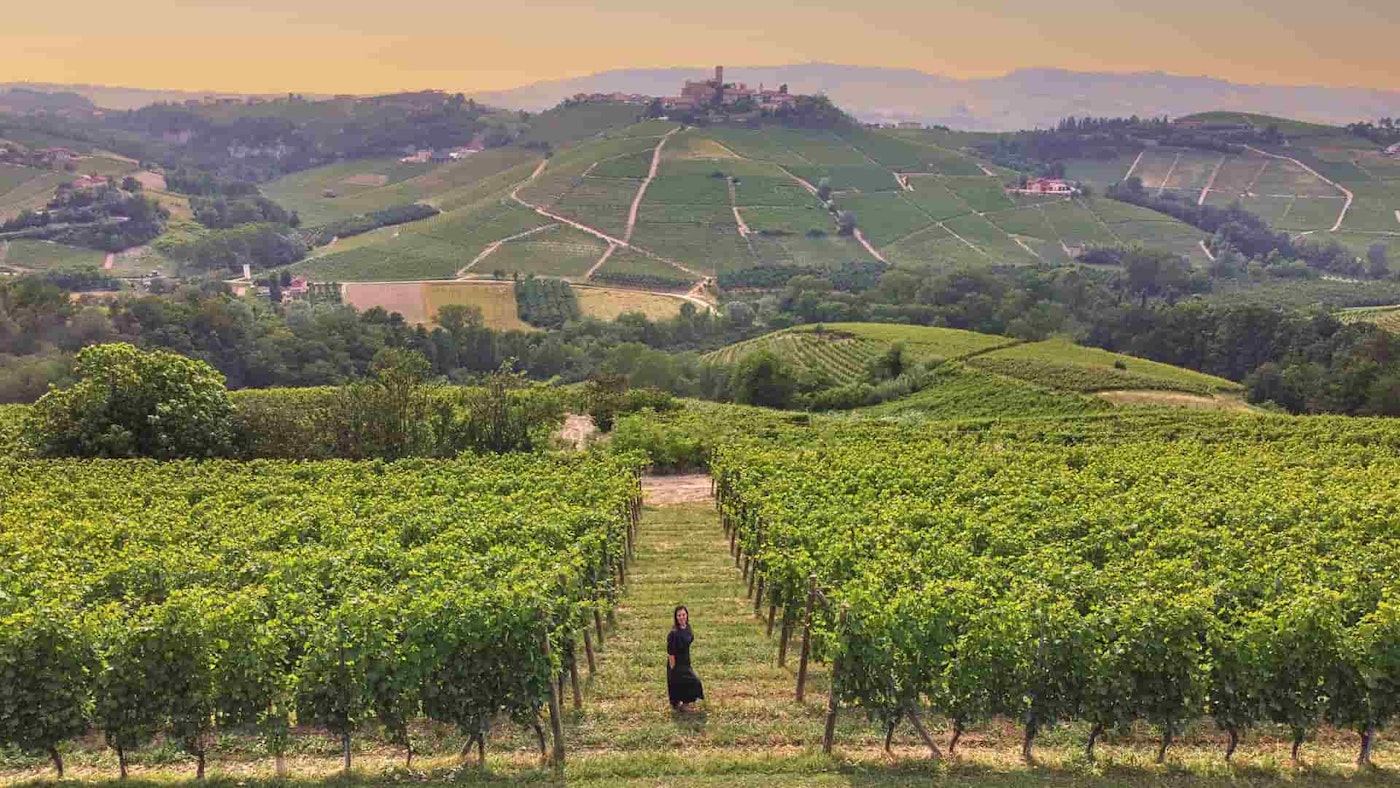
A Unesco World Heritage Site since 2014, the Langhe is one of Italy's most important wine regions. Close to the Maritime Alps and the Ligurian Apennines, the charming hills of Piedmont hide treasures of rare beauty, including breathtaking landscapes, small villages steeped in history and undisputed oenological excellence.
These "tongues of land" (from the etymology of the name, which is of Celtic origin), which cover an area of about 200 kilometres, are characterised by steep hills that form deep and narrow valleys distributed at different altitudes, a temperate cold sub-continental climate with unique characteristics (the protective effect of the Alps and the mild and humid currents of the Ligurian Sea) and a subsoil of sedimentary and marine origin, mainly composed of clayey-calcareous marl. This is an area with a mix of unique environmental conditions that allow the grapes to ripen in different expressions and give life to fine wines such as Barolo, Barbaresco, Nebbiolo and others.
THE GRAPER VARIETIES
All the wines of the Langhe have a very precise identity linked to their terroir of origin: the ancient autochthonous vines, such as Arneis, Barbera, Dolcetto, Favorita, Freisa, Nebbiolo and Pelaverga, are varieties that have always been present in southern Piedmont and around which the local agriculture and economy have revolved for centuries.
The most common traditional varieties are Nebbiolo, Dolcetto, Barbera, Moscato and, to a lesser extent, Pelaverga, Freisa, Favorita and Nascetta, while the most common international varieties are Chardonnay, Sauvignon, Cabernet Sauvignon, Merlot and some others
Designations
Barbaresco Docg
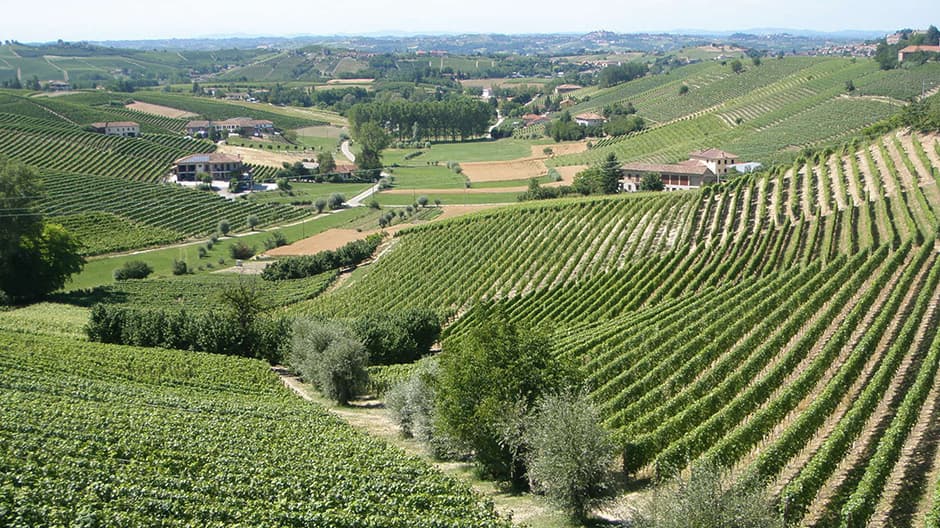
The history of Barbaresco (from the ancient name Barbaritium) is interwoven with legends of uncertain origin, dating back to Roman and Barbarian times, but what is certain is that in 1894 Domizio Cavazza, the first director of the Regia Scuola Enologica di Alba, codified the modern method of vinification for Nebbiolo in Barbaresco and launched it on the market alongside the already famous Barolo.
In 1966, along with Barolo, Brunello di Montalcino and Chianti, Barbaresco became one of the first Italian DOC wines and in 1980 one of the first DOCGs.
Produced in the areas of Barbaresco, Treiso and Neive and in the hamlet of San Rocco Seno d'Elvio di Alba, Barbaresco is made from pure Nebbiolo grapes of three main clones (Michel, Lampia and Rosè) and has an intense, brilliant colour ranging from ruby to garnet red. The bouquet is fruity and ethereal, with notes of raspberry and red fruit jam, geranium and violets, but also green pepper, cinnamon and nutmeg, hay and wood, toasted hazelnut, vanilla and even aniseed.
To be called Barbaresco, a wine must be aged for at least 24 months, including at least nine months in oak barrels, while it must be aged for at least four years to be called Riserva.
Barbera d'Alba Doc
The presence of the Barbera vine in the Alba area dates back to the second half of the 17th century, when some shoots were introduced from the Asti area. The period of greatest expansion was between 1860 and 1870, as described by Lorenzo Fantini in his monograph on viticulture and oenology in the province of Cuneo. The vine was particularly successful after the replanting of American vines due to phylloxera, proving to be resistant and productive.
Barbera d'Asti is a blend of Barbera (85 to 100%) and Nebbiolo (0 to 15%) grapes. It has a deep ruby red colour, a broad and complex bouquet with fruity notes of blackberry, cherry, strawberry and red fruit jam, and spicy notes of cinnamon, vanilla and green pepper.
The full-bodied taste softens the typical acidity of the vine (which is also attenuated by the use of small wood), but remains fundamental to the balance of this wine.
Barolo Docg
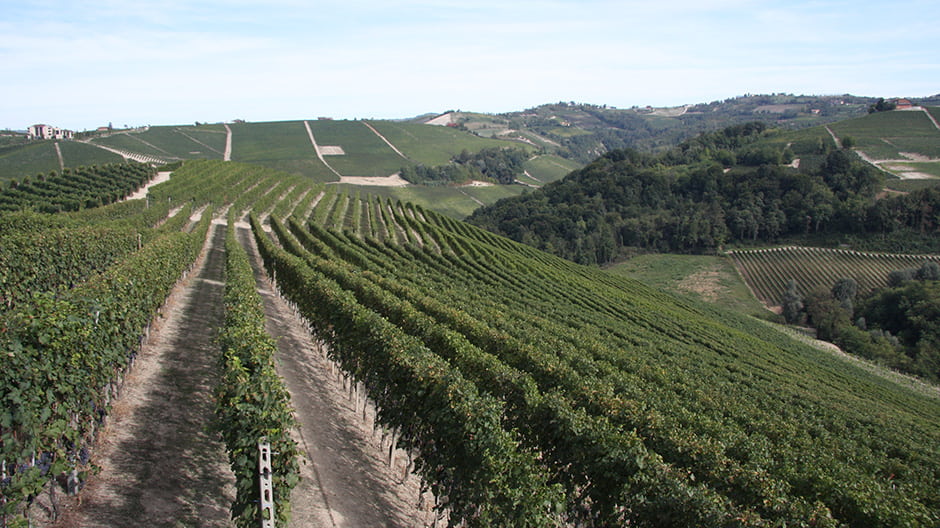
His Majesty Barolo is one of the great red wines of Italy. Made from pure Nebbiolo grapes, it is produced in the heart of the Langhe hills, a few kilometres south of Alba, in the territory of eleven communes dotted with imposing medieval castles, including that of Barolo, which gave its name to this world-famous wine.
Its fame began in 1751, when a group of Piedmontese diplomats sent a batch of Barolo to London: such was its success that even the future President of the United States, Thomas Jefferson, who was travelling in Europe, mentioned it in his diaries, describing it as "almost as lovely as Bordeaux and as lively as Champagne". It was a sweet and sparkling wine, because it was not yet known how to convert all the sugar in the must into alcohol.
Instead, the birth of modern Barolo took place in the middle of the 19th century, thanks to two key figures: Giulia Colbert Falletti, the last Marquise of Barolo, and Camillo Benso, Count of Cavour. Both entrusted the wine from their estates to the French oenologist Louis Oudart, who used the techniques of the great French wines and bottled Barolo for the first time in 1844 as a dry, still wine. Once popular, Barolo fascinated and impressed even King Charles Albert of Savoy, so much so that it became the official wine at banquets at the Turin court.
Since then, Barolo has been defined as "the wine of kings, the king of wines" and must be aged for at least 38 months from the first of November following the harvest, including at least 18 months in oak barrels, and only after five years may it be called "Riserva"
Deep and intense garnet red in colour, Barolo has a fruity and spicy bouquet reminiscent of small red fruits, cherries in brandy and jam, but also hints of roses and dried violets, cinnamon and pepper, nutmeg, vanilla and sometimes liquorice, cocoa, tobacco and leather. The palate is harmonious, with elegant and complex tannins: an elegant and powerful wine.
Diano d'Alba Docg
A wine that identifies with the entire territory of a small municipality: we are talking about Diano d'Alba, a red wine made from 100% Dolcetto grapes. Matured for ten months (at least 18 months for the "Superiore"), it has an intense ruby red colour with youthful violet reflections, a fragrant and fruity bouquet with strong notes of marasca cherries and sometimes blackberries or jam. In the mouth, the taste is dry, nervous, pleasantly influenced by a varietal aftertaste of bitter almond that stimulates the palate. The aromatic notes include geraniol, which makes it pleasant when young.
Dogliani Docg
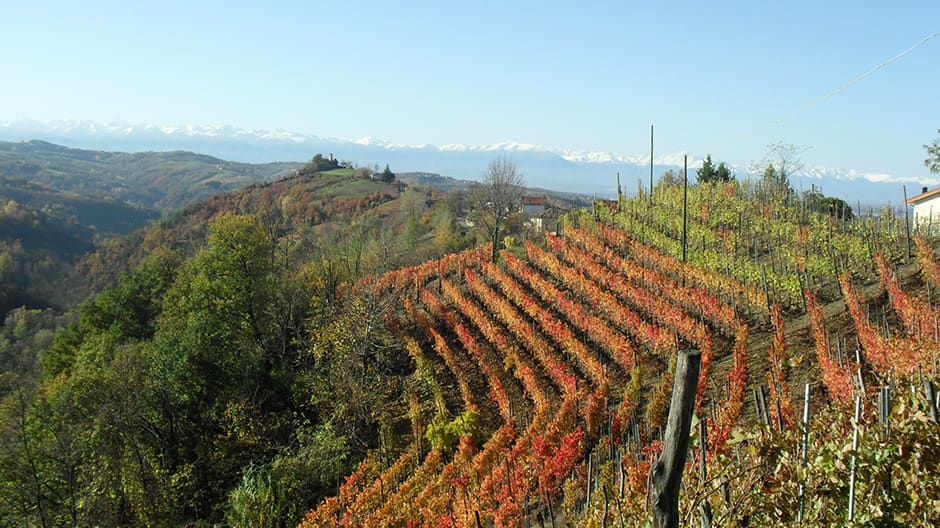
Dolcetto is closely linked to the Dogliani area, whose first president was Luigi Einaudi. With his winery he was able to give a decisive impulse and contribution to the promotion of the wine produced in his native area.
The presence of the Dolcetto vine in the Dogliani area seems to have been established as early as the year 1000, while the first document in the municipal archives that mentions Dolcetto dates back to 1593. The Denominazione di Origine Controllata was recognised in 1974 and the DOCG in 2005.
Produced in eleven municipalities of the lower Langhe, Dogliani has an intense ruby red colour with violet reflections, a persistent bouquet of flowers and fresh fruit such as blackberries and wild cherries, a dry and harmonious taste, with a pleasant almond and fragrant aftertaste, all accompanied by a moderate acidity that gives it a touch of unique liveliness.
Dolcetto d'Alba Doc
Dolcetto is one of the most widespread vines in Piedmont and has been present in the southern areas of the region since the Middle Ages, when the first traces of this wine were probably found in trade with Liguria.
Dolcetto d'Alba is a young wine with a ruby red colour, fresh and fruity on the nose, dry, full-bodied and harmonious on the palate, with a pleasant aftertaste of bitter almonds.
Langhe Doc
The Langhe DOC is the only specification with an ampelographic base that includes all the grape varieties traditionally grown in the area. Created in 1994 with the intention of uniting the territory, the Langhe DOC covers production that extends from the hills of the province of Cuneo to numerous areas of the Roero, for a total of 96 municipalities. The D.O.C. is a complete summary of the winemaking vocation of the territory it represents, which is extremely varied and dynamic, bringing together different grape varieties and many types of wine.
Of particular note are two wines that do not bear the name of the grape variety: the Langhe Bianco and the Langhe Rosso, which can be produced by vinification alone or by blending all the vines grown in the area.
Nebbiolo d'Alba Doc
Nebbiolo is one of the most widespread grape varieties in the hills on both sides of the Tanaro River, and the production of Nebbiolo d'Alba covers the territory of 25 municipalities on both sides of the river.
A pure red wine, Nebbiolo d'Alba is able to stand the test of time and express itself at its best after a few years. Garnet red in colour, it combines fruity aromas of raspberry, geranium and wild strawberry with ethereal and spicy notes of cinnamon and vanilla. On the palate, the totally dry taste benefits from a remarkable structure where alcohol, acidity and extract create sensations of harmony and elegance.
Verduno Doc
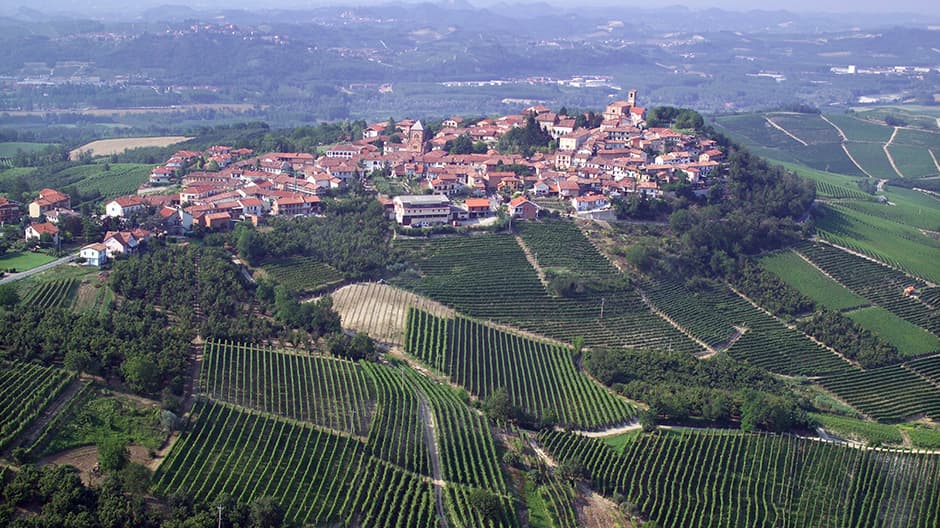
This wine comes from a few hectares of vineyards to the west of Alba and has its origins in the same cellars of Verduno Castle where King Charles Albert carried out his oenological experiments on Barolo grapes in the 19th century. It has always been used in blends with other grape varieties in the area, but only in recent decades has it been vinified on its own in the towns of Verduno, La Morra and Roddi.
With its fragrant, spicy aroma, it is considered a wine for connoisseurs and lovers of rarities, always in search of new emotions and special combinations. Ruby red in colour with violet and cherry reflections, Verduno is characterised by a delicate balance between acidity and tannins, which makes it fresh and graceful on the palate, despite its structure. Pleasant to drink when young, with floral and fruity notes of violets and cherries, it is stimulating with moderate ageing, which enhances the characteristic spicy notes of green and white pepper.
